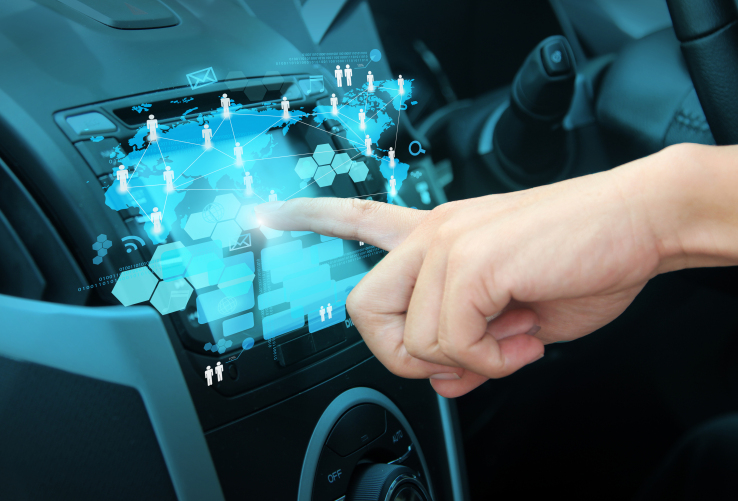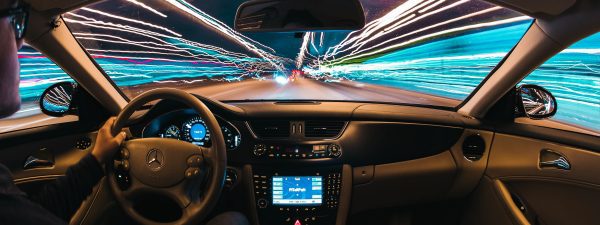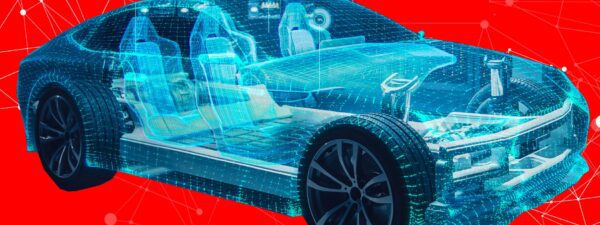by Peter Byrne
This article is the first in a two-part series.
An Introduction to Today’s Connected Vehicle
Today’s connected car can read your text messages, provide directions to the nearest sushi restaurant, and even parallel park for you. Yet this is just the beginning for a quickly growing Internet of Things (IoT) market. According to a report from BI Intelligence, the connected car market is growing at a five-year compound annual rate of 45 percent; that’s 10 times as fast as the overall car market. Gartner forecasts that about one in five vehicles on the road worldwide will have some form of wireless network connection by 2020, amounting to more than 250 million connected vehicles and a world of opportunity for connected vehicle applications. It’s not unrealistic to imagine your car waking you from your nap with an espresso after driving you to work.
Connected car functions are broken down into several categories, including autonomous/assisted driving, home integration (e.g., links to home alarms or heating systems), mobility management (e.g., increased fuel efficiency through best driving routes gathered via real-time traffic information), vehicle management (e.g., minimized operating costs through displays of service and vehicle functions status), infotainment, and safety. While infotainment applications are attractive to automotive vendors because of revenue potential, safety is, and always has been, a mission critical focus area for car manufacturers. Much of the need for new and improved safety features is a direct result of the many new distractions that greet drivers in today’s highly connected, infotainment world, with an expectation of constant availability to respond to every call, text, and tweet within a matter of seconds.
Many of the features in the infotainment and other connected car categories are currently only available in high-end vehicles, where a starting price of $55,000 can cover much of the inclusion cost. However, safety features such as backup cameras and lane departure warning systems can come standard across pricing categories and models. But what happens when the driver next to you doesn’t have a lane departure warning system and swerves into your vehicle, or your car alarm doesn’t deter the neighborhood car thief? This is where the world of vehicle telematics is focused on creating risk management solutions that can take current vehicle safety features one step further through vehicle recovery and crash detection and reporting services that provide peace of mind to harried drivers everywhere.
Beyond Infotainment: IoT and Auto Safety
We’ve all had one of those moments where we’re wandering around a mall parking lot swearing that we had left our car right there. In most cases, we eventually locate it a few rows over. But when a car has been stolen, it leaves the driver wishing s/he had paid for a vehicle recovery service.
Like most connected car services, vehicle recovery systems can be offered as a factory-installed option, or as an aftermarket add-on. Many car manufacturers offer a factory-installed option specific to their brand, perhaps the best known being OnStar by GM. Aftermarket products open up options to drivers who do not want to be limited to a brand-specific offering, enabling them to become familiar with a platform that they can use throughout their lifetime and – with some products – transfer from one car to another when an owner replaces her/his vehicle.
All vehicle recovery services require a combination of hardware and software and utilize either GPS, cellular, radio frequency, or some combination thereof, to track and locate missing vehicles. There are pros and cons to all of these technologies. GPS requires a clear line of sight to multiple satellites in order to locate a car’s position, so finding a car in a concrete parking structure would be impossible. And we are all familiar with the infamous cellular dead zones. The aftermarket product LoJack uses a long-established FM radio frequency technology, and also works with specially equipped police cars to find stolen vehicles. This relationship with local law enforcement in the regions where LoJack is offered raises the bar on safety by enabling police to more easily nab offenders.
Vehicle recovery systems are clearly different from a typical unconnected car alarm, which is so ubiquitous that a sounding alarm no longer elicits a reaction – even from the vehicle owner. The consequences of event detection devices or systems with basic or inadequately engineered discrimination routines are well familiar to consumers. False positives from car theft alarms, home intrusion alarms and even some lane departure warning systems are just a few examples of products that can erode consumer confidence in the product and even the underlying brand. Consumers have even less tolerance for systems that fail to perform as expected in a low-frequency, high-consequence event such as a vehicle crash.
Peter Byrne is vice president, Business Development, Insurance Telematics at CalAmp Corp.



